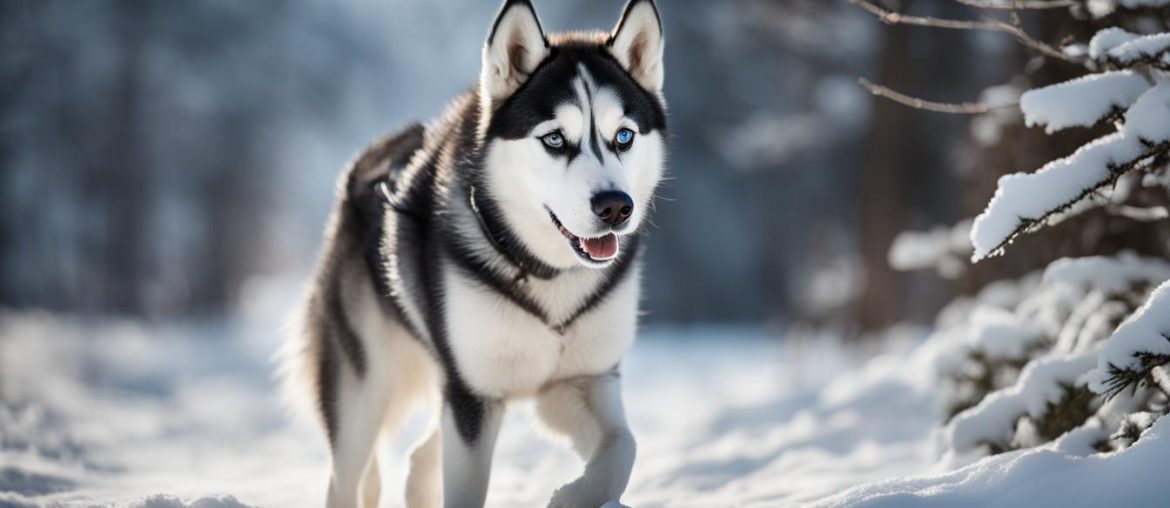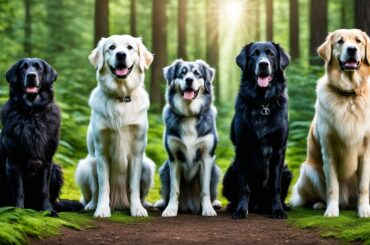Welcome to my article on Siberian Huskies! In this section, we will explore the fascinating personality traits and temperament of these unique dogs. Siberian Huskies are known for their intelligence, independence, and sometimes stubborn nature. They thrive on human companionship but require firm and gentle training from an early age.
One of the key characteristics of Siberian Huskies is their high prey drive, which means they may have a tendency to chase cats and livestock. Despite this, they are generally friendly with people, including children, and can get along well with other dogs, especially if they are raised together.
In terms of grooming needs, Siberian Huskies have a moderate requirement and they have a moderate energy level. With proper care and attention, they can live up to 14 years. Now, let’s dive deeper into the physical attributes, history, and other aspects of Siberian Huskies in the upcoming sections.
Key Takeaways:
- Siberian Huskies are intelligent, independent, and sometimes stubborn.
- They have a high prey drive and may chase cats and other small animals.
- Siberian Huskies are friendly with people, including children, and can get along well with other dogs.
- They have moderate grooming needs and require regular exercise.
- With proper care, Siberian Huskies can live up to 14 years.
Physical Attributes and Care
The Siberian Husky is a medium-sized dog breed known for its distinctive physical attributes and requires specific care to thrive. With their upright ears and medium-length coat, Siberian Huskies have a striking appearance. They come in various colors, ranging from black to pure white, and often have stunning blue or multicolored eyes, adding to their unique charm.
When it comes to grooming, Siberian Huskies require regular brushing to maintain their coat’s health and minimize shedding. Their fur is dense and double-layered, providing insulation against both cold and hot weather. During shedding season, which occurs twice a year, more frequent brushing is necessary to remove loose hair.
Proper exercise is essential for the well-being of Siberian Huskies. They have an average energy level and require at least 40 minutes of physical activity every day. Activities such as outdoor walks, runs, hikes, or playtime in a securely fenced yard provide the necessary exercise and mental stimulation these dogs need.
| Physical Attributes | Care |
|---|---|
| Medium-sized with upright ears | Regular brushing for coat maintenance |
| Various coat colors and eye colors | More frequent brushing during shedding season |
| Dense and double-layered fur | At least 40 minutes of exercise per day |
Overall, Siberian Huskies possess distinct physical characteristics that require regular grooming and dedicated exercise to keep them happy and healthy.
History and Origin of the Siberian Husky Breed
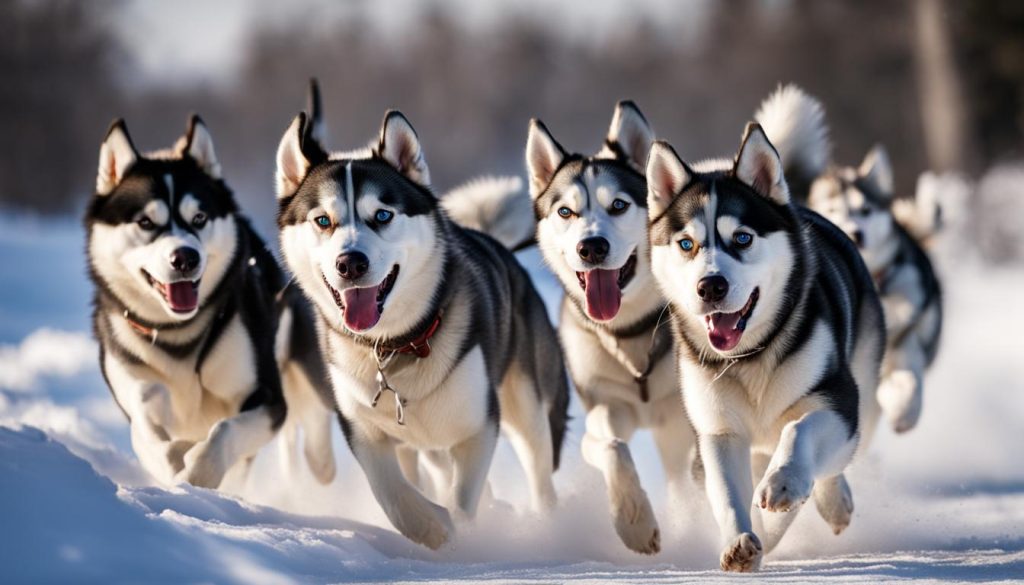
The Siberian Husky breed has a rich history that dates back over 3,000 years. Originating with the Chukchi tribe of northeast Asia, these dogs were integral to the survival and nomadic lifestyle of the tribe. The Siberian Husky’s ancestors were spitz-type dogs that were bred specifically for their endurance, strength, and ability to pull sleds over long distances in harsh Arctic conditions.
During the Alaskan gold rush of the late 19th century, Siberian Huskies gained recognition for their remarkable speed and resilience. They were widely used in sled dog races, delivering mail, and transporting supplies to remote areas. It was during this period that the breed garnered attention and started to gain popularity beyond the Chukchi tribe.
One of the most significant milestones in the Siberian Husky’s history was the “Great Race of Mercy” in 1925. A team of Siberian Huskies played a vital role in delivering life-saving diphtheria serum to the town of Nome, Alaska, during a severe outbreak. This heroic feat captured the world’s attention and solidified the breed’s reputation as dependable and enduring sled dogs.
| Year | Event |
|---|---|
| Over 3,000 years ago | Originated with the Chukchi tribe of northeast Asia |
| 19th century | Played a crucial role in the Alaskan gold rush |
| 1925 | Participated in the “Great Race of Mercy” to deliver diphtheria serum to Nome, Alaska |
Today, the Siberian Husky is cherished as a beloved family pet and continues to participate in sled dog races, ski-joring, and other dog sports. Their fascinating history, coupled with their striking appearance and friendly disposition, has made them a popular choice for dog enthusiasts worldwide.
Siberian Husky Temperament and Personality Traits
The Siberian Husky is known for its unique temperament and personality traits. These dogs are intelligent, independent, and have a willful nature. They are typically good-natured and friendly with people of all ages, including children. However, it is important to note that their love for running and their independent streak can sometimes override their affection for their owners.
In order to bring out the best in a Siberian Husky’s personality, early positive training and socialization are essential. This helps them focus on people and prevents unwanted behaviors. While they are not known for aggressive tendencies, they may exhibit dominance if not properly trained. It’s also worth mentioning that Siberian Huskies have a high prey drive, meaning they may chase after cats and other small animals.
When living with a Siberian Husky, it’s important to understand their unique traits and provide them with an environment that meets their needs. These dogs have high energy levels and require regular exercise to prevent boredom and destructive behavior. They prefer to be part of the family and dislike being left alone for long periods. Additionally, Siberian Huskies should be kept in a securely fenced yard or on a leash when outside, as their strong prey drive and wandering tendencies may lead them to try to escape.
| Traits | Personality | Temperament |
|---|---|---|
| Independent | Good-natured | Intelligent |
| Willful | Friendly | High prey drive |
| Energetic | Requires training and socialization | Love for running |
Siberian Husky Behavior and Temperament
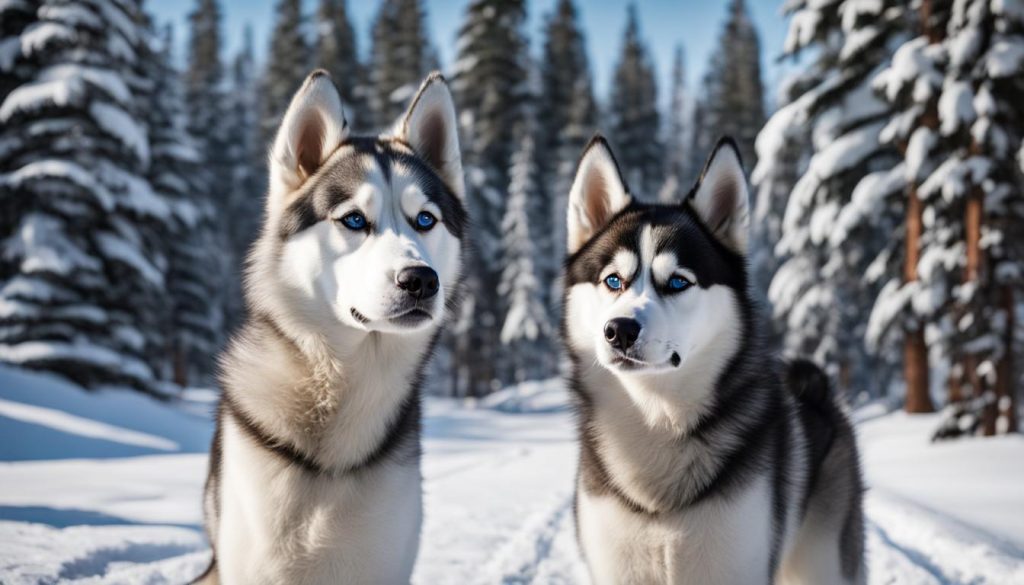
Living with a Siberian Husky can be a rewarding experience, but it’s important to understand their unique behavior and temperament. These dogs are known for their energetic and independent nature, which can present both challenges and joys for their owners.
Siberian Huskies are highly active and require regular exercise to keep them physically and mentally stimulated. They have a strong instinct to run and explore, so it’s crucial to have a securely fenced yard or always keep them on a leash when outside. Without proper exercise, Huskies can become bored and may exhibit destructive behaviors like excessive chewing or digging.
While Siberian Huskies are generally friendly and good-natured, they do have a strong prey drive and may not be suitable for households with small animals or cats. Early socialization and positive training are essential to help them differentiate between play and chase behaviors. It’s also important to note that Siberian Huskies can be quite vocal and may howl or bark to communicate.
Siberian Husky Behavior at a Glance:
- Energetic and active
- Independent and self-reliant
- Strong prey drive
- May not get along well with small animals
- Can be vocal and howl
It’s important to establish yourself as the pack leader and provide consistent, positive reinforcement-based training to ensure a well-behaved Husky. Siberian Huskies are intelligent dogs, but they can be stubborn and may try to test their boundaries. Patience, consistency, and a firm but gentle approach are key to successful training.
| Training Tips for Siberian Huskies |
|---|
| Start training and socialization from an early age |
| Use positive reinforcement techniques, such as treats and praise |
| Be patient and consistent |
| Provide mental stimulation through puzzle toys and interactive games |
| Avoid punishment-based training methods, as they can lead to fear or aggression |
“Understanding and accommodating the unique behavior of a Siberian Husky is essential for a harmonious relationship with these beautiful and spirited dogs. With proper training, exercise, and socialization, they can be loving and loyal companions.”
In summary, Siberian Huskies have a distinct behavior and temperament that require dedicated owners who can meet their exercise, training, and socialization needs. They are energetic and independent, with a strong prey drive, so caution must be taken when introducing them to small animals. With the right care and guidance, Siberian Huskies can bring joy and companionship to those who appreciate their unique qualities.
Training and Intelligence

The training process for a Siberian Husky can be both challenging and rewarding. Due to their independent nature and strong will, Huskies require consistent and positive reinforcement-based training methods. It is important to establish yourself as the pack leader and earn their respect, as they are highly intelligent and will try to outsmart their owners if given the opportunity.
Siberian Huskies are known for responding well to treats, which can be used as rewards during training sessions. Positive reinforcement techniques such as praise and rewards for good behavior are more effective than punishment-based methods. Consistency and patience are key to successfully train a Husky.
Mental stimulation is crucial for this breed to prevent boredom and destructive behavior. Engaging them in puzzles, interactive toys, and obedience training can help satisfy their intelligent minds. It is also important to establish a routine and provide regular exercise to keep them physically and mentally fit.
| Training Tips for Siberian Huskies | Training Techniques |
|---|---|
| Start training from a young age | Positive reinforcement |
| Be consistent and patient | Clicker training |
| Use treats as rewards | Interactive training games |
| Establish yourself as the pack leader | Obedience training |
Training a Siberian Husky requires dedication and commitment, but with the right approach, you can shape them into well-behaved and obedient companions.
Training Challenges and Tips
One of the challenges you may encounter when training a Siberian Husky is their independent and stubborn nature. They have a strong will and may try to test boundaries or ignore commands. In such cases, it is important to remain patient and consistent with your training methods. Avoid using forceful or harsh techniques, as it can lead to fear or aggression.
Another aspect to consider is their high energy levels. Before starting a training session, make sure your Husky has had enough exercise to release their pent-up energy. This will help them be more focused and receptive to training.
- Be patient and consistent: Huskies may take longer to learn commands compared to other breeds, but with consistency, they can excel in obedience training.
- Use positive reinforcement: Reward your Husky with treats, praise, and playtime when they exhibit good behavior or successfully follow a command.
- Keep training sessions short and engaging: Huskies have a short attention span, so it is important to keep training sessions brief and fun. Incorporate games and interactive activities to make learning enjoyable for them.
- Seek professional help if needed: If you’re facing difficulties in training your Siberian Husky, consider consulting a professional dog trainer who specializes in Huskies or working breeds.
Remember, training is an ongoing process that requires patience, consistency, and positive reinforcement. With proper training techniques and a dedicated approach, your Siberian Husky can become a well-behaved and intelligent companion.
Exercise and Activity Requirements
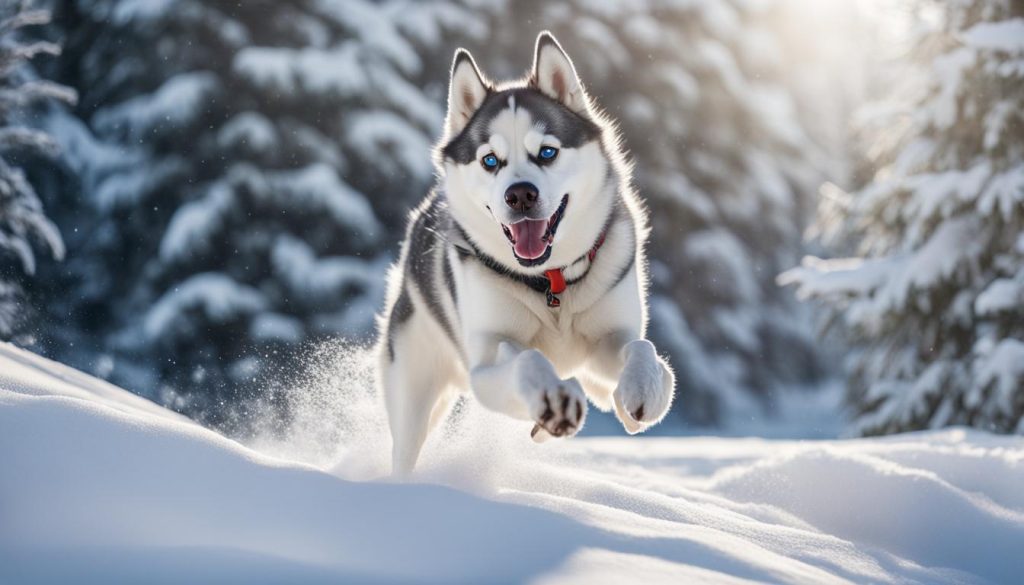
The Siberian Husky is a highly active and energetic breed that requires regular exercise to keep both their body and mind stimulated. Without adequate exercise, Huskies can become bored, restless, and may engage in destructive behaviors. It is important for owners to understand the exercise needs of a Siberian Husky and provide them with opportunities to burn off their energy.
On average, a Siberian Husky needs at least 40 minutes of exercise per day. This can include activities such as walks, runs, hikes, or playtime in a securely fenced yard. These dogs love to explore and enjoy being in nature, so outdoor activities that allow them to engage their senses are highly beneficial. Providing them with a variety of exercise options will help prevent boredom and keep them physically fit.
Additionally, Siberian Huskies can benefit from having another playful dog companion. They are social animals and enjoy the company of other dogs. Having a fellow canine friend can provide them with additional exercise opportunities and keep them mentally stimulated through play and interaction.
It is important to note that when exercising a Siberian Husky, they should always be supervised and kept on a leash when outside. This is because Huskies have a strong prey drive and may try to chase after small animals. Their wandering tendencies and curiosity can also lead them to explore their surroundings, so proper containment and supervision are essential for their safety.
To summarize, the Siberian Husky is a breed that thrives on exercise and activity. Providing them with regular opportunities for physical and mental stimulation is crucial to their overall well-being. By understanding and meeting their exercise needs, owners can ensure that their Siberian Husky remains happy, healthy, and content.
| Activity Requirements | Summary |
|---|---|
| Minimum Exercise Time | At least 40 minutes per day |
| Ideal Activities | Walks, runs, hikes, playtime in a secure yard |
| Benefit of Having a Second Dog | Additional exercise opportunities and mental stimulation |
| Supervision and Containment | Always leash Huskies outside due to prey drive and wandering tendencies |
Siberian Husky Prey Drive, Instinct, and Alertness
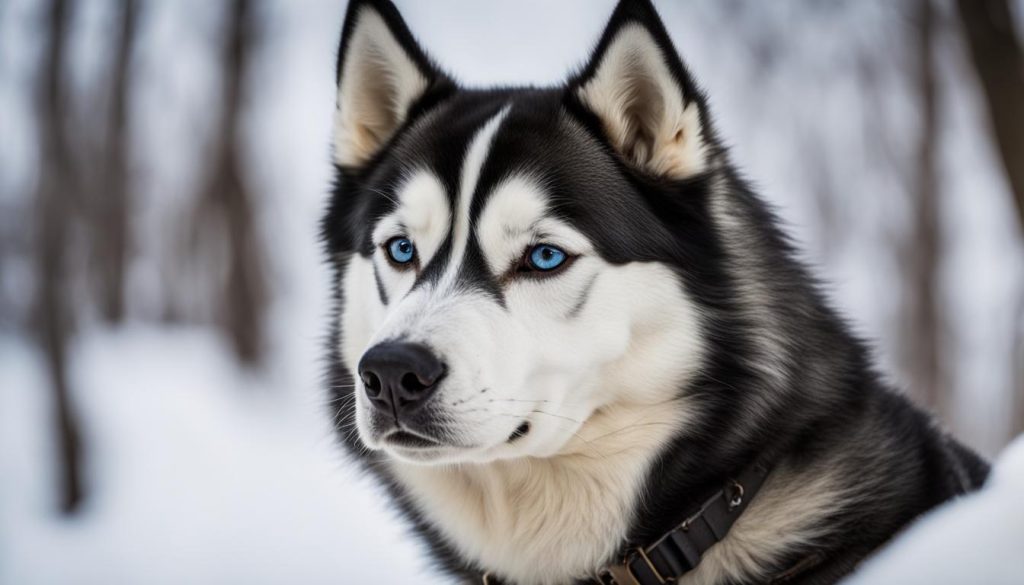
The Siberian Husky is a breed known for its strong prey drive, instinctual behaviors, and alertness. These characteristics are rooted in their history as sled dogs, where their ability to track and chase prey was essential for survival in harsh environments.
As a result, Siberian Huskies have maintained their natural hunting instincts, which can manifest in a strong desire to chase and pursue smaller animals, such as cats or birds. It is important for owners to be aware of this prey drive and take necessary precautions to ensure the safety of their pets and other animals.
Siberian Huskies possess a heightened sense of alertness, making them keenly aware of their surroundings. They are not easily startled by loud noises or unfamiliar situations, which can be attributed to their history as working dogs in remote areas. However, their lack of fear can also make them more prone to running away and getting lost if not properly contained and supervised.
To effectively manage their prey drive and alertness, it is recommended to keep Siberian Huskies on a leash or in a securely fenced area when outside. This will prevent them from chasing or potentially harming other animals. Additionally, providing mental and physical stimulation through regular exercise and engaging activities can help satisfy their instincts and reduce the likelihood of destructive behaviors.
Overall, understanding and respecting the Siberian Husky’s prey drive, instinct, and alertness is essential for responsible ownership. By providing a safe and stimulating environment, owners can ensure the well-being of their Huskies while fostering a harmonious relationship between their pet and the surrounding community.
Wrapping Up
To summarize, the Siberian Husky is a remarkable breed with a distinct personality and temperament. They possess intelligence and independence, making them unique companions. However, it is crucial to provide them with proper training, socialization, and exercise to ensure their well-being.
Siberian Huskies are generally good-natured and friendly with people, including children. Nevertheless, their willful behavior may surface if not appropriately trained. It is essential to establish firm boundaries and consistent training methods to guide their independent nature in a positive direction.
These dogs have a high prey drive, which means they may chase small animals. Therefore, caution should be exercised when introducing them to other pets. Despite this instinct, with the right care, Siberian Huskies can be loyal and loving companions for those who can meet their physical and mental stimulation requirements.
FAQ
What is the temperament of a Siberian Husky?
Siberian Huskies are known for their intelligence, independence, and somewhat stubborn nature. They are good-natured and friendly with people, including children.
Are Siberian Huskies good with other dogs?
Siberian Huskies are often good with other dogs, especially if they are raised together. However, proper socialization is important to ensure positive interactions.
What is the grooming requirement for a Siberian Husky?
Siberian Huskies have moderate grooming needs and require brushing a couple of times a week. During shedding season, more frequent grooming is necessary.
How much exercise does a Siberian Husky need?
Siberian Huskies are energetic dogs and require at least 40 minutes of exercise per day. Regular physical activity helps prevent boredom and destructive behavior.
Do Siberian Huskies have a prey drive?
Yes, Siberian Huskies have a high prey drive. They may chase cats and other small animals due to their instinctual nature.
Can Siberian Huskies be left alone for long periods?
Siberian Huskies thrive in homes where they can be part of the family. They dislike being left alone for long periods and may develop separation anxiety.
How should I train a Siberian Husky?
Training a Siberian Husky requires consistency and positive reinforcement. They are intelligent dogs and respond well to treats as rewards during training sessions.
How long do Siberian Huskies live?
With proper care, Siberian Huskies can live up to 14 years.
Are Siberian Huskies good watchdogs?
Siberian Huskies are generally friendly with strangers and not typically good watchdogs. However, they may alarm bark if they sense something out of the ordinary.


